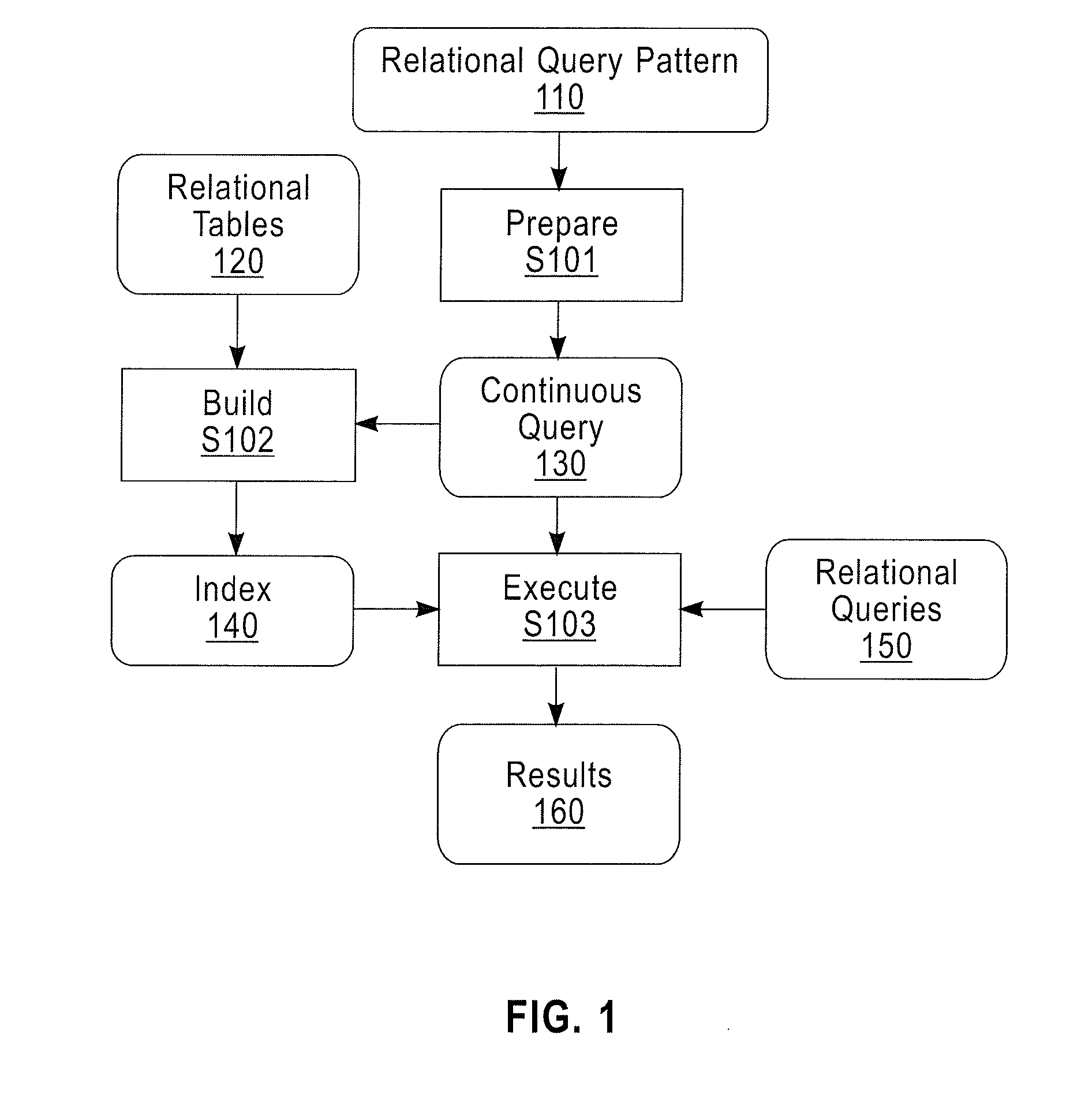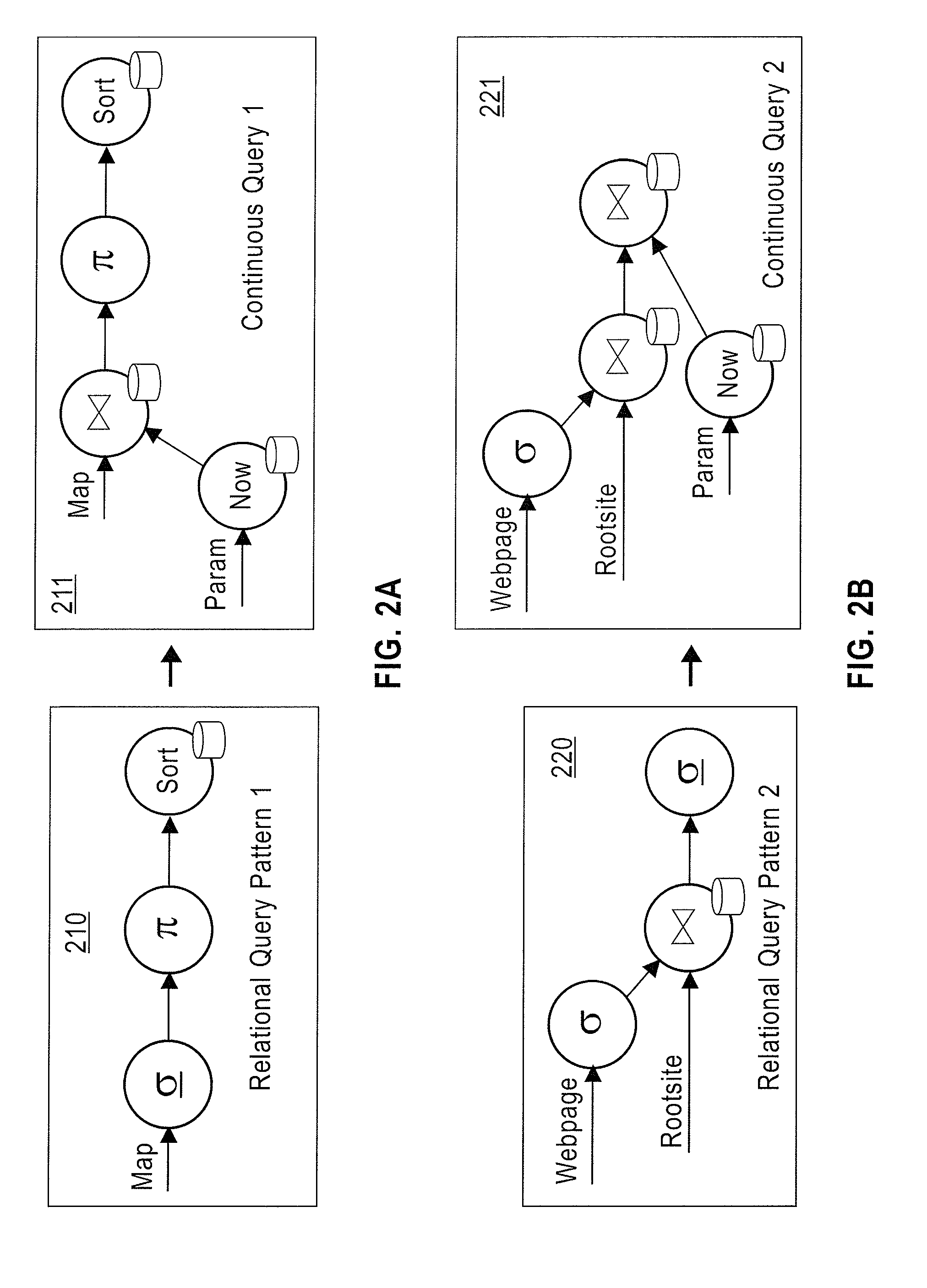Transforming relational queries into stream processing
a technology of relational queries and stream processing, applied in the field of relational queries, can solve the problems of natural slowdown, database operations become bottlenecks, and applications do not really use the strengths of database technology
- Summary
- Abstract
- Description
- Claims
- Application Information
AI Technical Summary
Benefits of technology
Problems solved by technology
Method used
Image
Examples
Embodiment Construction
[0024]At least one embodiment of the invention may improve performance of an application when executing a series of relational queries by exploiting streaming systems and by dropping transactional and persistence support when such is not required by the application. A relational query is a query against a database, which may be expressed by a query statement using various query languages such as the software query language (SQL), the SPARQL Protocol and RDF query language (SPARQL), etc. In a series of relational queries, these queries are issued one by one, each running separately. However, in stream processing, a query runs continuously, by streaming data through the streams of a data flow graph. At least one embodiment of the method achieves high scalability while maintaining fidelity (e.g., faithfully replicating the same results as for the original queries).
[0025]FIG. 1 illustrates a high-level flow chart for a method of transforming relational queries into stream processing acc...
PUM
 Login to View More
Login to View More Abstract
Description
Claims
Application Information
 Login to View More
Login to View More - R&D
- Intellectual Property
- Life Sciences
- Materials
- Tech Scout
- Unparalleled Data Quality
- Higher Quality Content
- 60% Fewer Hallucinations
Browse by: Latest US Patents, China's latest patents, Technical Efficacy Thesaurus, Application Domain, Technology Topic, Popular Technical Reports.
© 2025 PatSnap. All rights reserved.Legal|Privacy policy|Modern Slavery Act Transparency Statement|Sitemap|About US| Contact US: help@patsnap.com



